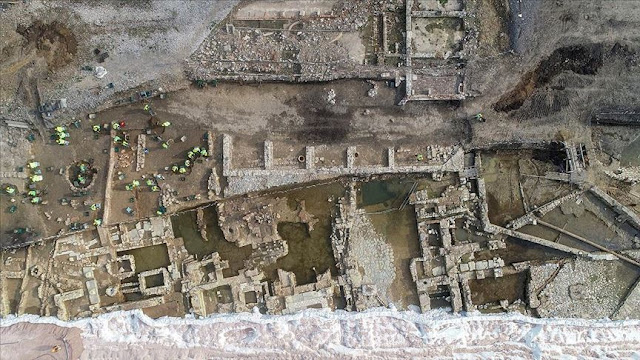Archeological unearthings around a train station in Istanbul have uncovered an abundance of verifiable remains, including tombs, relics, and a shower, all implying of the rich past of the old city of Khalkedon (Kadıköy), likewise called "the Land of the Blind."
Around the recorded Haydarpaşa Train Station, situated on the Asian side of Istanbul, unearthings for metro development uncovered chronicled remains. The burrows, began in 2018 by Turkey's Culture and Tourism Ministry and Istanbul Archeological Museums, have been finished with the most extreme consideration throughout the previous two years.
Burrows uncovering recorded structures from the Ottoman, Byzantine, Hellenistic, and Classical periods shed light on the profound foundations of Turkey, a support of civic establishments.
Remains were found by a group of 430 individuals, including archeologists and gallery specialists, in a territory of 350,000 square meters including the zone encompassing metro stations and Ibrahimaga, close Haydarpaşa. These remaining parts give critical indications about Khalkedon, the old Land of the Blind from somewhere in the range of 2,500 years back.
The region apparently got its name around 667 B.C. when Byzas from Megara built up a province on the European landmass of the Golden Horn, inverse Khalkedon on the Asian side. The individuals of Khalkedon more likely than not been visually impaired not to have chosen the ideal detect, the promontory directly over the water, he contemplated. (The Byzantine Empire, which managed Istanbul until 1453, when it was vanquished by Ottoman powers, was named after Byzas.)
Royal residence and mansion
The products of these burrows incorporate structural remains, tombs, relics, a shower and around 10,000 gold coins having a place with Khalkedon.
The unearthings uncovered the remaining parts of a potential fifth-century royal residence and a T-molded structure thought to be a château.
A fifth-century church worked for the sake of Saint Bassa was additionally found. Work with minor brushes and exactness apparatuses uncovered the skeletons of 28 individuals from that period.
Remains being reestablished
Stays from various regions are ordered by specialists as indicated by the area and profundity where they were found.
The remaining parts are cleaned with little brushes and isolated and at times consolidated, if conceivable.
After restoration, the remains are recorded, photographed, and then sent to the Istanbul Archeological Museum to eventually be exhibited.
‘Key excavation of Istanbul history’
Coskun Yılmaz, Istanbul's top culture and tourism official, told Anadolu Agency that some of the remains unearthed during subway construction date back to the year 5 B.C.












No comments :
Write yorumShare memories with turkey